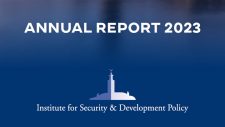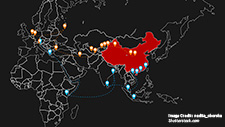Traditional and Non-Traditional Security Threats in Central Asia: Connecting the New and the Old
Niklas Swanström
This article analyzes how traditional and non-traditional threats in Central Asia interact and reinforce each other. It argues that analysts need to overcome the intellectual separation between “hard” and “soft” threats and to better understand how “hard” and “soft” security issues overlap and in many ways reinforce each other. The weakness of Central Asian states seriously impairs their capacity to deal with security threats, especially non-traditional ones (including environmental threats). The result is that security problems in the region tend to multiply. The combination of weak states with old and new security threats in Central Asia weakens government structures even more and creates a vicious cycle.
Related Publications
-
ISDP Annual Report 2023
ISDP’s Annual Report for the year 2023. We look back on 2023, a year in which tensions and conflicts captured the strategic space in ISDP’s focus areas, making headlines around […]
-
A New Spring for Caspian Transit and Trade
Major recent shifts, starting with the Taliban victory in Afghanistan and Russia’s war in Ukraine have led to a resurgence of the Trans-Caspian transportation corridor. This corridor, envisioned in the […]
-
China in Eurasia: Revisiting BRI amidst the Russia-Ukraine Crisis
This paper discusses China’s trade and connectivity plans under the Belt and Road Initiative (BRI) in the Eurasian region and the impact of the Russian invasion of Ukraine on Chinese […]
-
The State of the Russian Oil Price Caps
At the G20 Meeting in February, U.S. Treasury Secretary Janet Yellen took a victory lap for the two rounds of oil price caps imposed on Russia since December last year. Yellen argued […]



